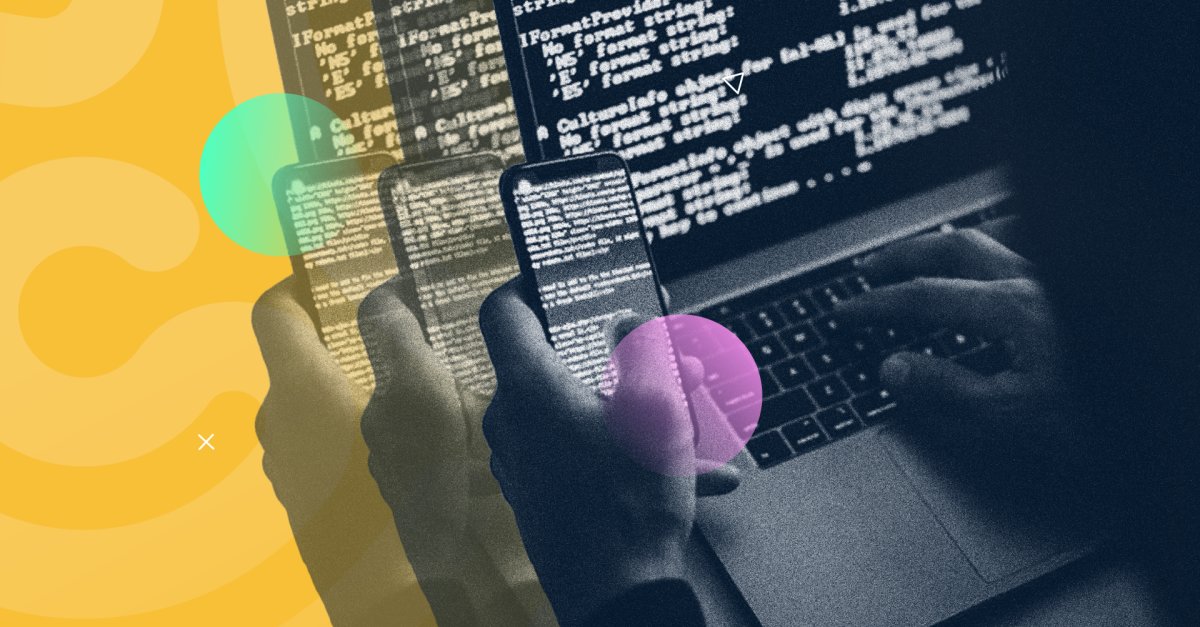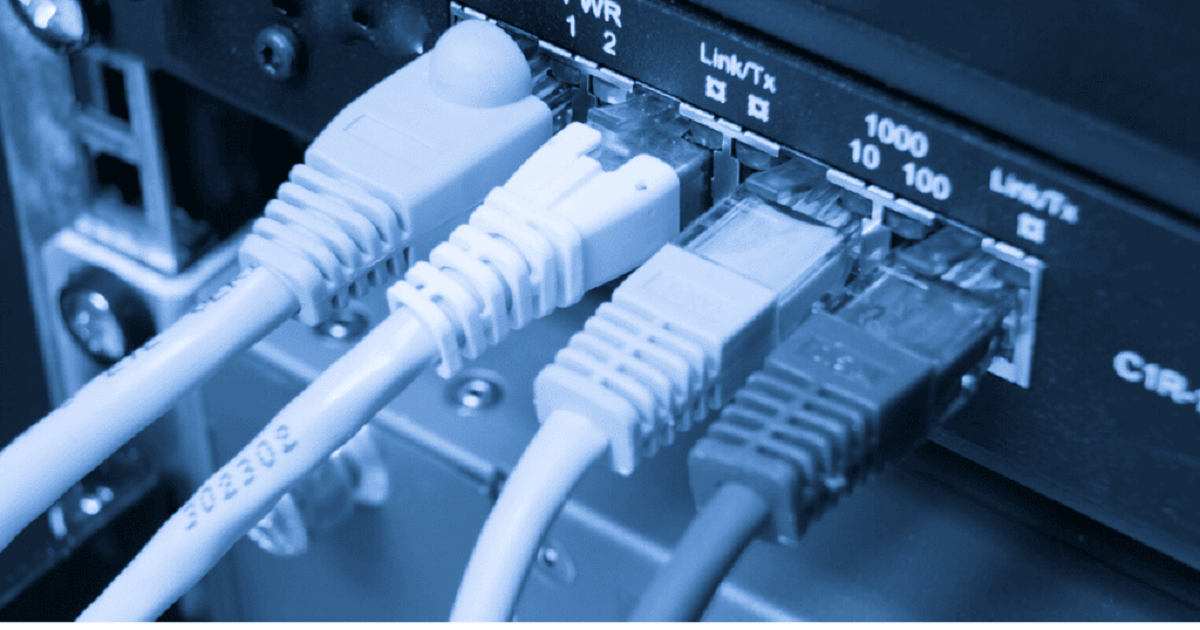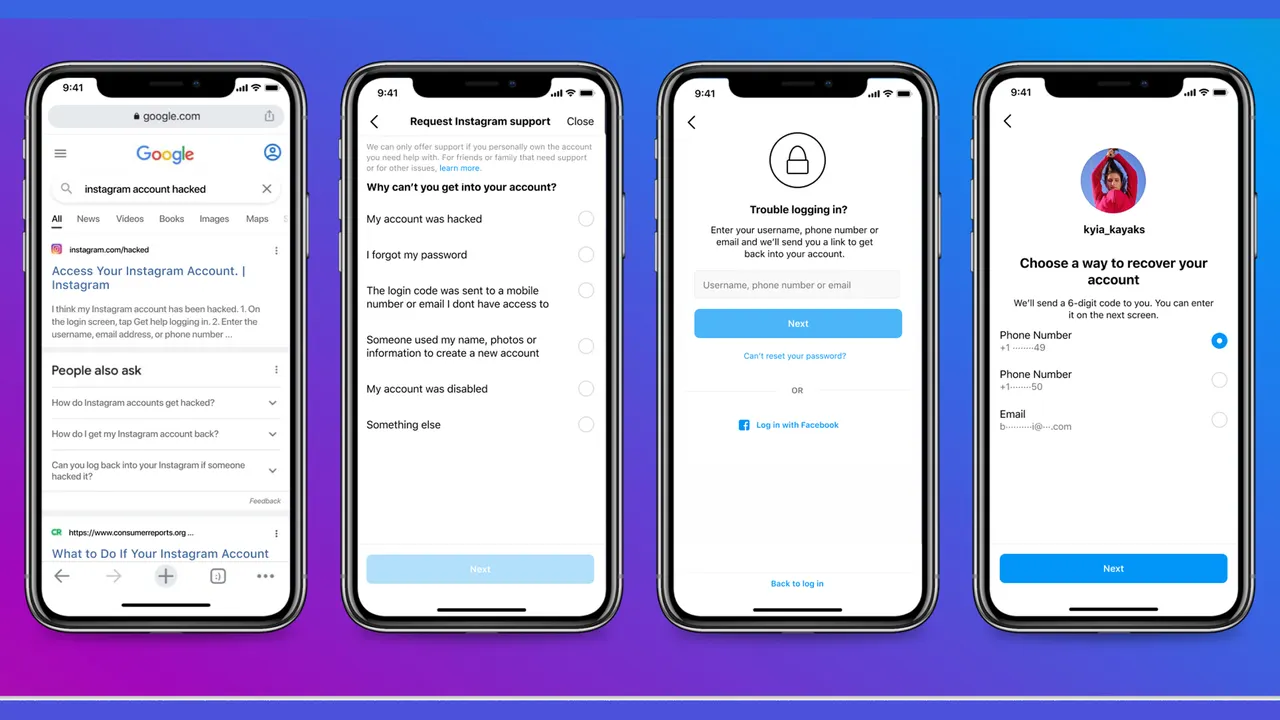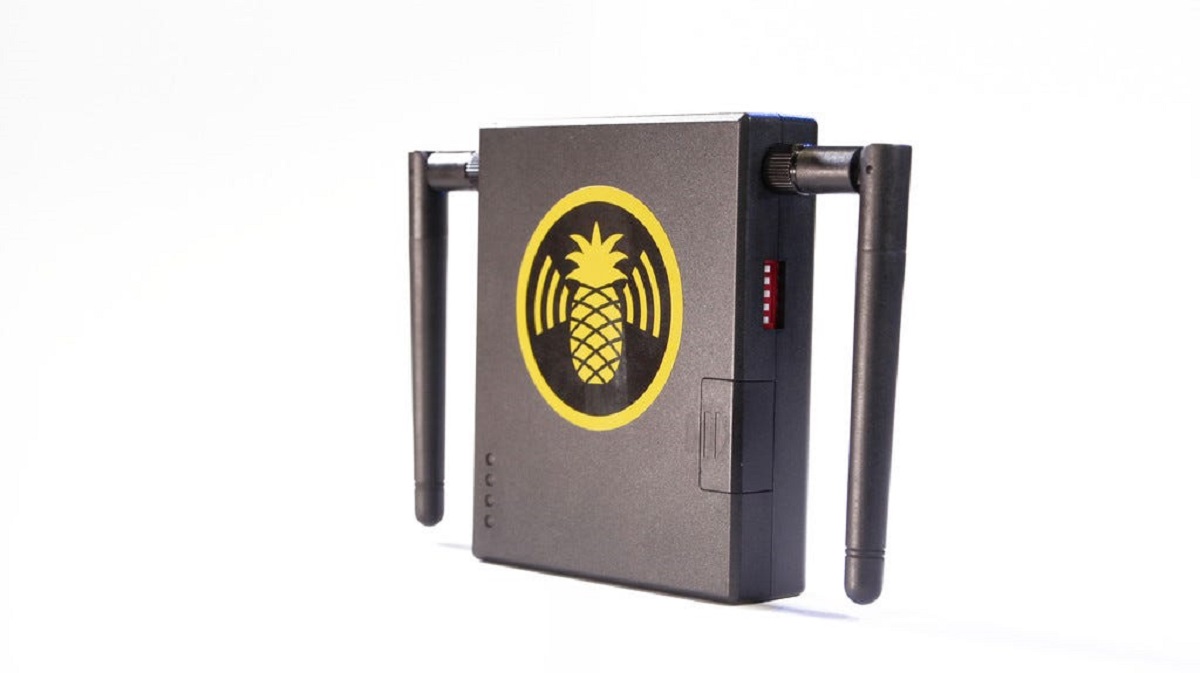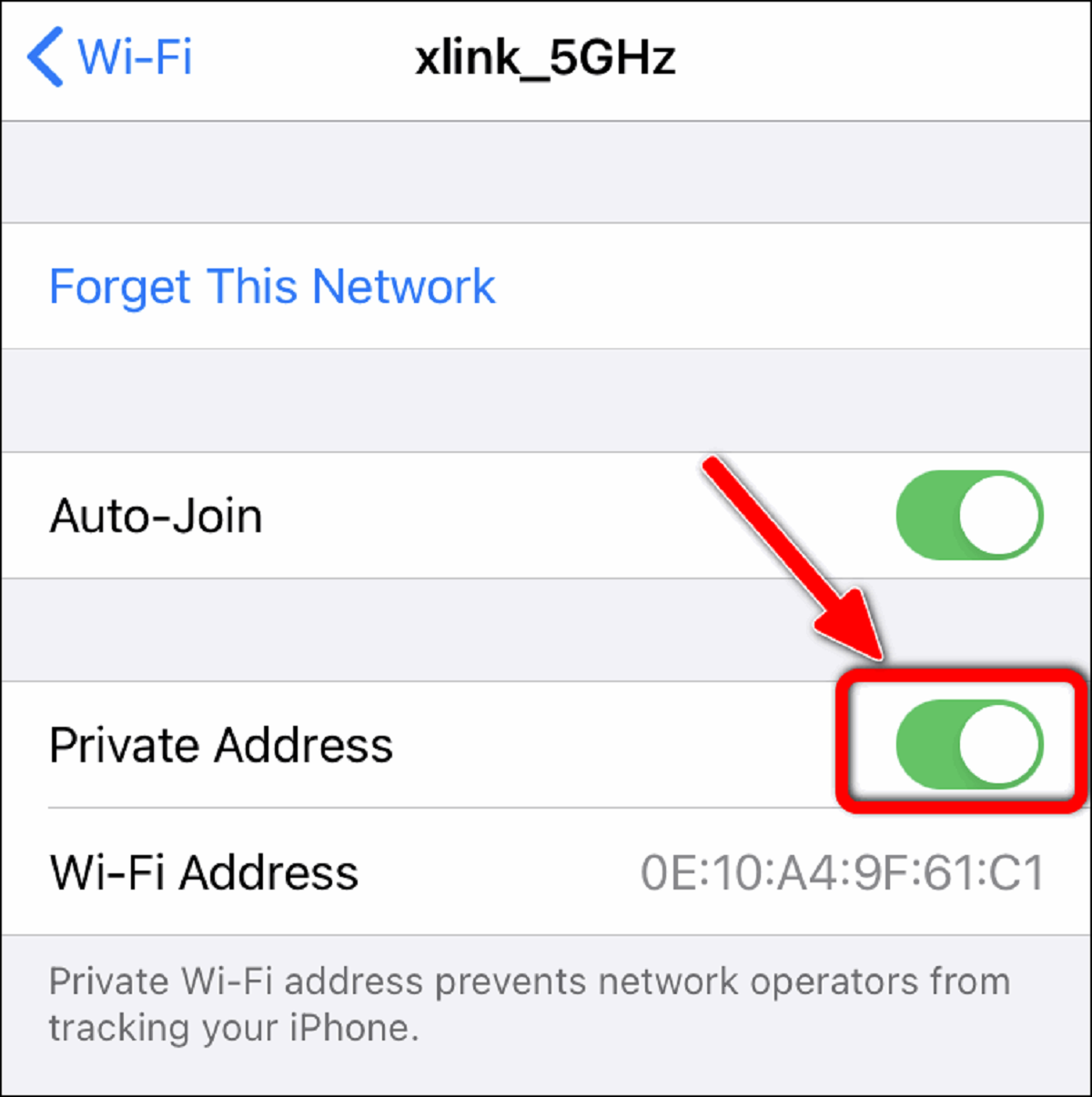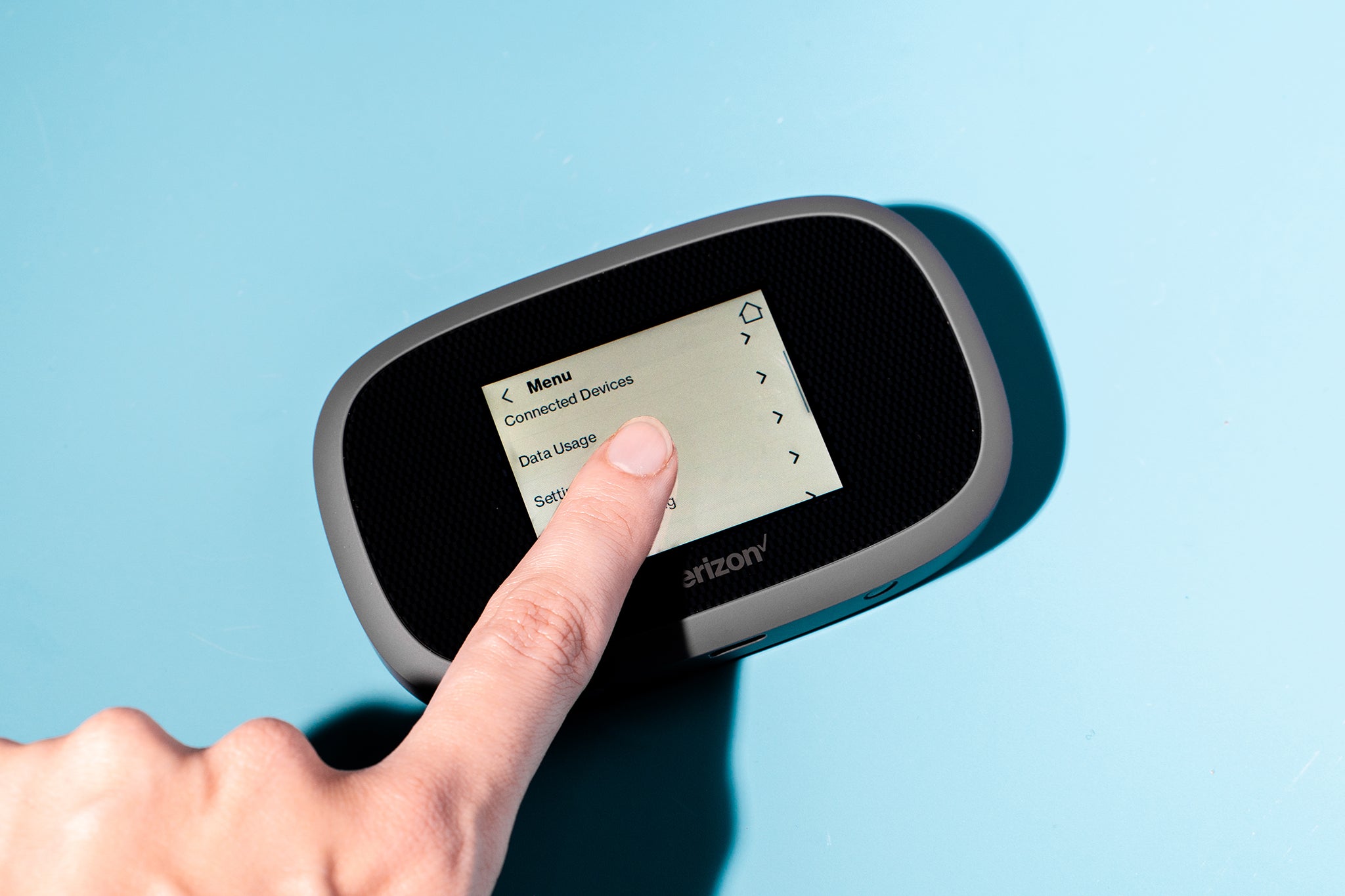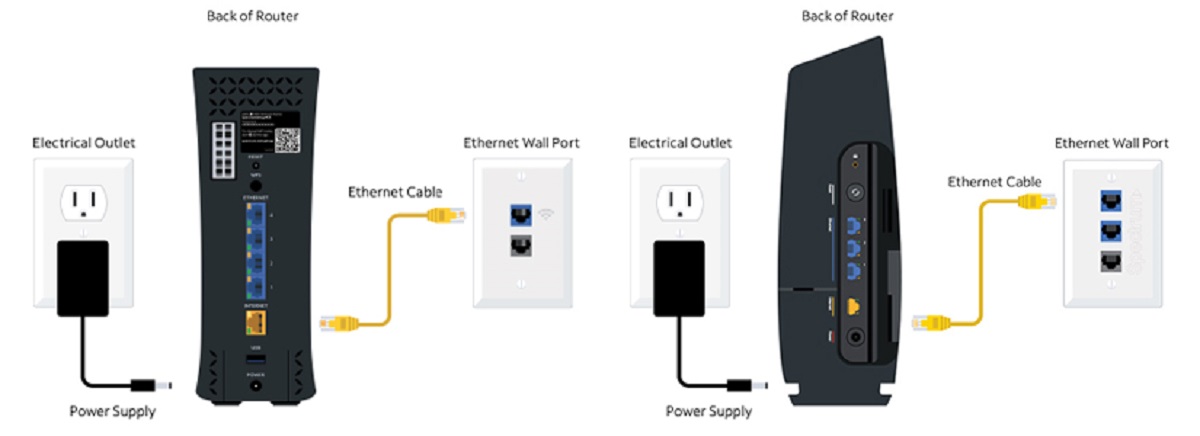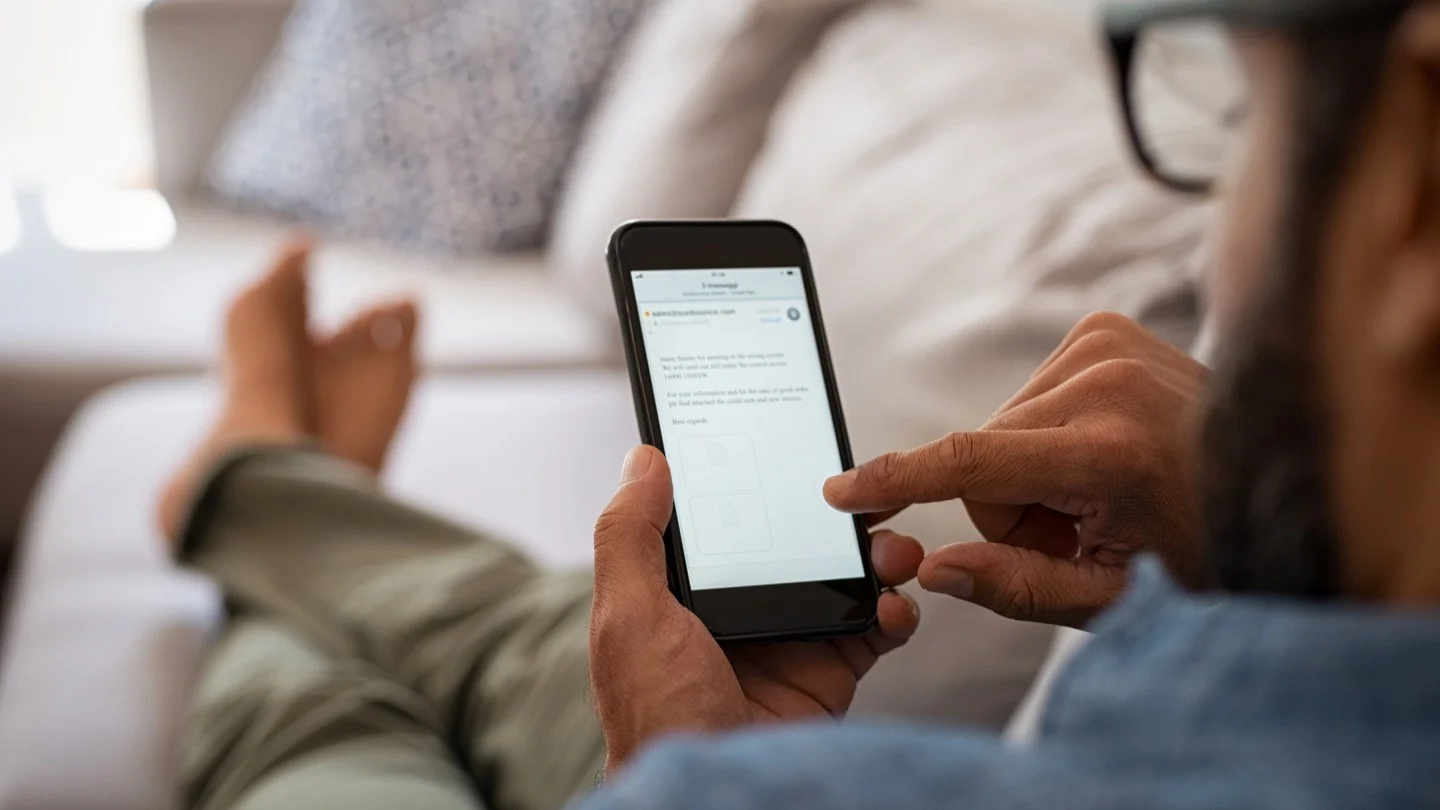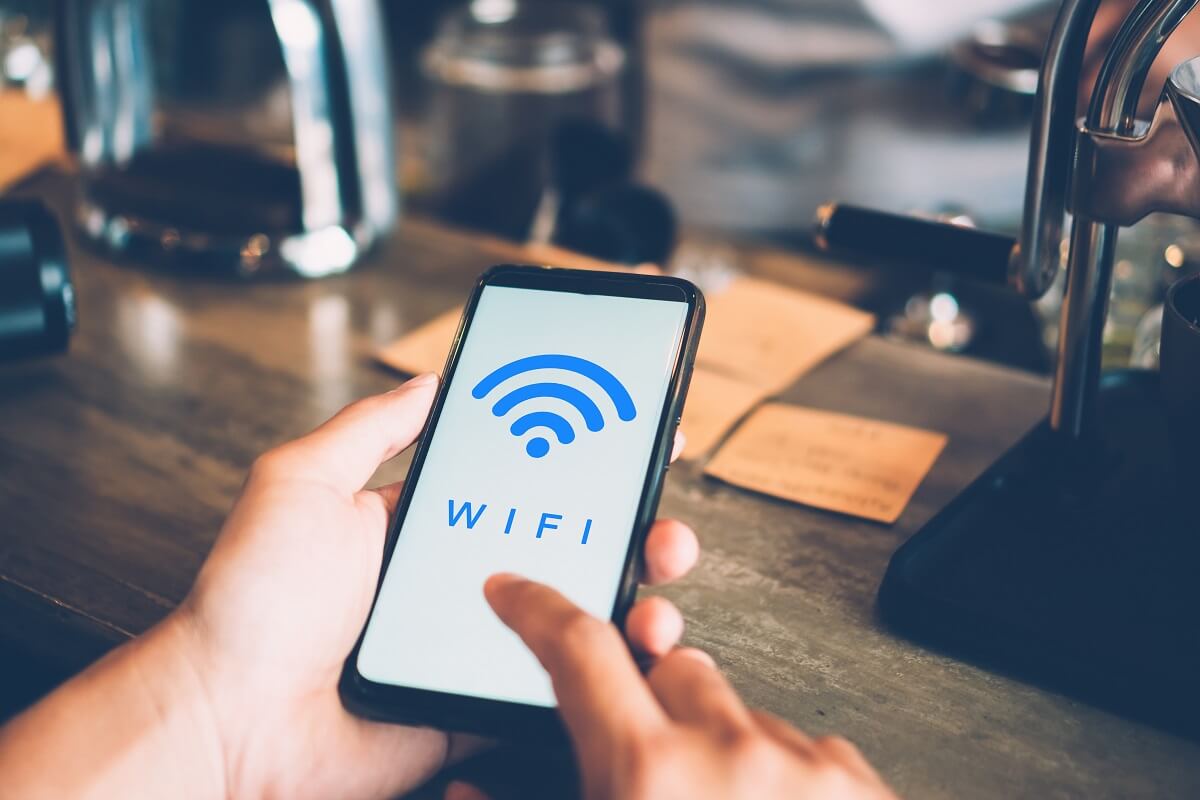Introduction
Welcome to the digital age, where being connected to the internet is a necessity. With the proliferation of smartphones, laptops, and tablets, we rely on public wifi networks to stay connected on the go. Whether it’s at a café, library, airport, or hotel, these networks offer convenience and accessibility. However, it’s important to be aware of the security risks that come with using public wifi.
Public wifi refers to wireless networks that are accessible to anyone within range. These networks are typically provided by businesses or organizations to attract customers or offer free internet access. While public wifi offers numerous benefits, such as convenience and cost savings, it also comes with inherent security risks that users need to be mindful of.
In this article, we will explore the security risks associated with public wifi and provide tips on how you can protect yourself while using these networks.
Take a moment to imagine the scenario: you’re sitting in a coffee shop, sipping your favorite beverage, and connecting to the free wifi network. You browse through your emails, check social media, and maybe even do some online shopping. While all of this may seem harmless, the reality is that your personal and financial information could be at risk.
By understanding the potential security risks and taking necessary precautions, you can minimize the chances of falling victim to cyber threats when using public wifi. So, let’s delve into the risks and explore ways to protect yourself in the digital age.
What is public wifi?
Public wifi, also known as wireless or open access networks, refers to wireless internet connections that are accessible to the public in specific locations. These locations can include cafes, restaurants, hotels, airports, libraries, and other public areas. Public wifi networks provide a convenient way for individuals to connect their devices to the internet without using cellular data.
Public wifi networks are typically offered by businesses, organizations, or local governments to attract customers, enhance visitor experiences, or provide free internet access to the community. These networks are often unsecured, meaning they lack encryption and do not require a password or authentication to connect.
The availability of public wifi networks has become increasingly common in today’s digital world, enabling people to stay connected, browse the internet, and access online services while on the go. It allows individuals to work remotely, communicate with others, and access information conveniently and affordably.
Public wifi networks often have a visible network name (SSID) that users can identify and connect to with their devices. Once connected, users can access the internet and web services just like they would on their home or office network.
However, it is important to note that public wifi networks are inherently less secure than private networks. They are open for anyone within range, meaning that potential attackers or malicious individuals can also access these networks.
While public wifi networks provide convenience and accessibility, it is crucial for users to understand the security risks associated with using them. In the following sections, we will explore the potential security risks and offer tips on how to protect yourself when using public wifi networks.
Benefits of using public wifi
In a world where constant connectivity is essential, public wifi networks offer numerous benefits to users. These networks have become an integral part of our daily lives, providing convenience and accessibility. Here are some key advantages of using public wifi:
- Internet access on the go: Public wifi networks allow individuals to stay connected to the internet while on the move. Whether you’re traveling, working remotely, or simply out and about, you can easily connect to a public wifi network and access the web without relying on cellular data.
- Cost savings: Public wifi networks offer the advantage of being free or available at a lower cost compared to using your cellular data. This is especially beneficial for individuals who use large amounts of data or travel frequently and need internet access without additional expenses.
- Productivity: Public wifi networks enable users to work remotely and access online services, allowing for increased productivity. Whether it’s checking emails, collaborating on projects, or attending virtual meetings, public wifi provides the necessary connectivity for work-related tasks.
- Social connectivity: Public wifi networks create opportunities for individuals to connect with others and engage in social interactions. Whether it’s checking social media, messaging friends, or sharing experiences online, public wifi facilitates social connectivity and communication.
- Access to information and services: Public wifi networks provide access to a vast array of information and online services. Whether it’s searching for information, reading news articles, accessing educational resources, or utilizing online tools, public wifi networks open up a world of possibilities.
These benefits make public wifi networks an attractive option for individuals who need internet access while on the go. However, it’s important to balance the convenience of public wifi with the potential security risks, as we will discuss in the following sections.
Security risks of using public wifi
While public wifi networks offer convenience and accessibility, they also come with significant security risks that users should be aware of. It’s crucial to understand these risks to protect your personal and sensitive information from potential cyber threats. Here are some common security risks associated with using public wifi:
- 1. Man-in-the-middle attacks: Public wifi networks are susceptible to man-in-the-middle (MITM) attacks, where a cybercriminal intercepts the communication between a user’s device and the network. This puts users at risk of having their data and sensitive information, such as login credentials or financial details, intercepted and stolen.
- 2. Malware and viruses: Public wifi networks can be a breeding ground for malware and viruses. Cybercriminals can deploy malicious software to infect devices connected to the network, compromising sensitive information, corrupting files, or even gaining control of the device.
- 3. Data interception: Without encryption, data transmitted over public wifi networks can be easily intercepted by attackers. This includes emails, passwords, banking details, and other sensitive information, which can be captured and used maliciously.
- 4. Rogue access points: Attackers can create rogue access points that mimic legitimate public wifi networks. When users connect to these rogue networks, attackers can monitor their online activities, capture personal information, or inject malicious content.
- 5. Lack of encryption: Public wifi networks often lack proper encryption protocols, leaving your data vulnerable to interception. Without encryption, anyone with basic knowledge and tools can access and view your internet traffic.
- 6. Sniffing and eavesdropping: Cybercriminals can use sniffing tools to intercept and capture unencrypted data transmitted over public wifi networks. This allows them to eavesdrop on your online activities, potentially gaining access to sensitive information.
- 7. Identity theft: Public wifi networks provide an opportunity for attackers to steal personal information, such as social security numbers, credit card details, and addresses. This stolen information can be used to commit identity theft, resulting in financial loss and damage to your reputation.
These security risks highlight the importance of taking precautions when using public wifi networks. In the next section, we will discuss ways to protect yourself and mitigate these risks while connected to public wifi.
Man-in-the-middle attacks
One of the most significant security risks associated with public wifi networks is the potential for man-in-the-middle (MITM) attacks. In a MITM attack, a cybercriminal intercepts the communication between a user’s device and the public wifi network, allowing them to access and manipulate the data being transmitted.
When you connect to a public wifi network, your device sends and receives data packets to and from the network. In a typical MITM attack, an attacker positions themselves between your device and the network, intercepting and reading all the data passing through. This can include sensitive information such as login credentials, financial details, and personal information.
There are various techniques that attackers use to execute MITM attacks on public wifi networks. One common method is through the use of rogue access points, which are fake wifi networks that are set up to mimic legitimate networks. When users unknowingly connect to these rogue networks, the attacker can intercept their data and capture sensitive information.
Another technique used in MITM attacks is the use of packet sniffing tools. These tools allow attackers to capture and analyze data packets on a public wifi network, enabling them to obtain login credentials, session cookies, or other sensitive information.
To protect yourself from MITM attacks on public wifi networks, there are several precautions you can take:
- Use a virtual private network (VPN): A VPN encrypts your internet traffic, creating a secure connection between your device and the network you’re accessing. This encrypts the data and prevents attackers from intercepting it, ensuring your online activities remain private.
- Be cautious of network connections: Before connecting to a public wifi network, double-check the network name with the establishment or verify it with staff. Avoid connecting to networks with generic or suspicious names.
- Avoid accessing sensitive information: It’s best to avoid accessing sensitive information, such as online banking or entering passwords, while connected to a public wifi network. Wait until you’re on a secure and trusted network to perform such activities.
- Ensure websites use secure connections: Look for the padlock icon in the browser’s address bar when visiting websites. This indicates that the website uses a secure HTTPS connection, encrypting the data exchanged between your device and the website.
- Keep software and devices up to date: Regularly update your devices and applications to ensure you have the latest security patches and protection against known vulnerabilities.
By being vigilant and implementing these measures, you can significantly reduce the risk of falling victim to man-in-the-middle attacks when using public wifi networks.
Malware and viruses
Public wifi networks can be breeding grounds for malware and viruses, posing a significant security risk to users. When your device is connected to a public wifi network, it becomes vulnerable to various forms of malicious software that can compromise your sensitive information and wreak havoc on your system.
Attackers may deploy malware and viruses on public wifi networks through a variety of methods. They can create fake wifi networks, enticing users to connect and unwittingly download malware onto their devices. Another tactic involves injecting malicious code into websites or advertisements that users may encounter while browsing the internet on public wifi.
Once your device is infected with malware or a virus, attackers gain control over your system and can perform a range of malicious activities. These can include stealing your personal information, such as login credentials or banking details, encrypting your files and demanding ransom payments (known as ransomware), or using your device to propagate the malware to other unsuspecting users.
To protect yourself from malware and viruses while using public wifi networks, consider implementing the following measures:
- Use reliable security software: Install and use reputable antivirus and antimalware software on your devices. Regularly update this software to ensure it remains effective in detecting and preventing new threats.
- Exercise caution when clicking on links: Avoid clicking on suspicious or unfamiliar links, especially while connected to public wifi. Be wary of emails, pop-up ads, or websites that seem suspicious or ask for personal information.
- Enable automatic software updates: Keep your operating system, apps, and browsers up to date with the latest security patches and updates. These updates often include bug fixes and security enhancements that can protect you from known vulnerabilities.
- Avoid downloading files from untrusted sources: Be cautious when downloading files, especially from websites or sources that you do not trust. Malicious files can masquerade as legitimate content and infect your device.
- Regularly back up your data: Regularly back up your important files and documents to an external storage device or a cloud storage service. This way, even if your device becomes infected with malware, you can restore your files and minimize the impact.
By practicing safe browsing habits and implementing robust security measures, you can reduce the risk of encountering malware and viruses while connected to public wifi networks.
Data interception
One of the significant security risks associated with using public wifi networks is the potential for data interception. Without proper encryption measures in place, your data can be easily intercepted by attackers on the same network, compromising your sensitive information.
When you connect to a public wifi network, your device sends and receives data packets that contain information such as login credentials, banking details, and personal information. Without encryption, these data packets can be intercepted by cybercriminals who are connected to the same network.
Attackers can use various tools and techniques to intercept your data on public wifi networks. Packet sniffing is a common technique where attackers capture and inspect the contents of data packets transmitted between your device and the network. This allows them to extract sensitive information from unencrypted data packets.
To protect your data from interception on public wifi networks, consider the following precautions:
- Use encrypted connections: Whenever possible, opt for websites and services that use secure HTTPS connections. These connections encrypt the data exchanged between your device and the website, making it harder for attackers to intercept and decipher.
- Use a virtual private network (VPN): A VPN creates a secure and encrypted connection between your device and the internet. By routing your traffic through a VPN server, your data becomes encrypted, making it difficult for attackers to intercept and decipher.
- Avoid transmitting sensitive information: Be cautious about entering sensitive information, such as passwords or credit card details, while connected to public wifi networks. Wait until you’re connected to a secure and trusted network before performing activities that involve sensitive data.
- Keep your devices updated: Regularly update your devices, including operating systems and applications, to ensure you have the latest security patches. This helps protect against known vulnerabilities that attackers might exploit to intercept your data.
- Use a firewall: Enable and configure a firewall on your device to block unauthorized access to your data. Firewalls act as a barrier between your device and potential attackers, helping to prevent data interception.
By implementing these measures, you can significantly reduce the risk of your data being intercepted while using public wifi networks. Protecting your data is essential to safeguard your privacy and prevent potential identity theft or financial loss.
Rogue access points
When connecting to a public wifi network, one of the security risks to be aware of is the presence of rogue access points. Rogue access points refer to fake or malicious wifi networks that are designed to deceive users into connecting to them, allowing attackers to gain unauthorized access to their devices and data.
Attackers set up rogue access points in public spaces, often with names similar to legitimate networks, making it difficult for users to differentiate between the real and fake networks. Once users connect to a rogue access point, the attackers can intercept their data, capture login credentials, and potentially inject malicious code into their devices.
Rogue access points can be created using various methods. Attackers may use specially-designed hardware or software to create a wifi network that appears legitimate, or they may compromise an existing public wifi network to redirect users to a rogue network that they control.
Protecting yourself from rogue access points on public wifi networks requires a combination of caution and preventive measures. Here are some steps you can take:
- Verify network names: Before connecting to a public wifi network, confirm the network name with the establishment or ask the staff for the correct network name. Avoid connecting to networks with generic or suspicious names that may indicate the presence of a rogue access point.
- Disable auto-connect: Disable the auto-connect feature on your device to prevent it from automatically connecting to any available wifi network. This gives you the opportunity to manually select and verify the network you want to connect to.
- Use a VPN: Using a virtual private network (VPN) can help protect against rogue access points. A VPN encrypts your internet traffic, making it harder for attackers to intercept and decipher your data, even if you inadvertently connect to a rogue network.
- Be cautious of network prompts: Be wary of any unexpected network prompts or login screens that you encounter when trying to connect to a public wifi network. Attackers may attempt to trick users into entering their login credentials on a rogue access point.
- Monitor for signal strength: Pay attention to the signal strength of a specific wifi network. If you notice that the signal strength becomes significantly stronger or weaker while in the same location, it could be an indication of a nearby rogue access point.
Remaining vigilant and taking these precautions can help mitigate the risk of falling victim to rogue access points while using public wifi networks. By being proactive, you can protect your devices and sensitive information from unauthorized access and potential compromise.
Lack of encryption
A significant security risk associated with public wifi networks is the lack of encryption. Encryption is the process of encoding data in such a way that only authorized parties can access and understand it. When a network lacks encryption, all the data transmitted between your device and the network is sent in plain text, making it vulnerable to interception and exploitation by attackers.
Without encryption, the information you send and receive over public wifi networks is easily readable by anyone with the technical knowledge and tools to capture and analyze network traffic. This includes sensitive information such as login credentials, personal data, and financial details.
Attackers can exploit the lack of encryption on public wifi networks using various methods, including packet sniffing and eavesdropping. By capturing unencrypted data packets, attackers can potentially gain access to your personal and sensitive information, leading to identity theft, financial loss, or other malicious activities.
To protect yourself from the lack of encryption on public wifi networks, consider the following steps:
- Use a virtual private network (VPN): A VPN encrypts your internet traffic, creating a secure tunnel between your device and the network you’re accessing. By using a VPN, even if the public wifi network lacks encryption, your data remains protected and inaccessible to attackers.
- Pay attention to website encryption: When browsing the web, look for websites that use secure HTTPS connections. These websites encrypt the data exchanged between your device and the website, ensuring the confidentiality of your information.
- Limit your online activities: Avoid performing activities that involve sensitive information, such as online banking or shopping, while connected to public wifi networks. Wait until you’re on a secured and trusted network to perform such activities.
- Consider using cellular data: If possible, rely on your cellular data instead of connecting to public wifi networks. Cellular data uses encryption by default, providing a more secure connection compared to unencrypted wifi networks.
- Avoid accessing sensitive accounts: If you must use public wifi for basic browsing, refrain from accessing accounts that contain sensitive information, such as your email, social media accounts, or cloud storage. Minimizing your exposure on unencrypted networks reduces the risk of your data being intercepted.
By taking these precautions, you can minimize the impact of the lack of encryption on public wifi networks and protect your data from interception and unauthorized access.
Sniffing and eavesdropping
Sniffing and eavesdropping are common security risks associated with using public wifi networks. These techniques allow attackers to intercept and capture unencrypted data packets transmitted between your device and the network, potentially exposing your sensitive information.
When you connect to a public wifi network, your device sends and receives data packets that contain information such as website requests, login credentials, and personal data. Without proper encryption, these data packets can be easily intercepted by attackers who are connected to the same network.
Sniffing involves the capturing and analyzing of data packets passing through the network to find valuable information, such as login credentials or financial details. Eavesdropping refers to the intentional or unintentional act of listening in on network communications to gain access to information.
Attackers can use various tools and techniques to sniff and eavesdrop on public wifi networks, including packet sniffers and wireless network analyzers. These tools allow attackers to monitor network traffic, view unencrypted data packets, and extract sensitive information.
To protect yourself from sniffing and eavesdropping attacks on public wifi networks, consider the following measures:
- Use a virtual private network (VPN): A VPN encrypts your internet traffic, making it difficult for attackers to intercept and capture your data. By using a VPN, you create a secure tunnel between your device and the network, ensuring the confidentiality of your data.
- Connect to trusted networks: Whenever possible, connect to trusted wifi networks that are encrypted and require authentication. Networks that use WPA2 encryption provide a higher level of security compared to open networks.
- Limit your activities on unencrypted networks: Avoid performing activities that involve sensitive information, such as accessing your email or conducting online banking, while connected to unencrypted public wifi networks. Stick to basic browsing or use cellular data for more secure connections.
- Be cautious of unsecured websites: Look for the padlock icon or “HTTPS” in the URL of websites you visit. These indicate that the connection is encrypted, reducing the risk of your data being intercepted during transmission.
- Avoid using public wifi for confidential conversations: Be mindful of discussing sensitive or confidential matters over public wifi networks as they can be vulnerable to eavesdropping. Save those conversations for when you are on a trusted and secure network.
By following these precautions, you can protect your data from being sniffed or eavesdropped upon while using public wifi networks. An extra layer of encryption and careful selection of networks can go a long way in safeguarding your information.
Identity theft
One of the gravest security risks associated with using public wifi networks is the potential for identity theft. Public wifi networks, especially those without proper security measures, can be fertile ground for cybercriminals looking to steal personal information and assume someone else’s identity.
Identity theft involves the unauthorized acquisition and use of someone’s personal information, such as their name, social security number, credit card details, or login credentials. Attackers can use this stolen information to commit various fraudulent activities, including making unauthorized purchases, opening fraudulent accounts, or even using the stolen identity for illegal purposes.
When you connect to a public wifi network, your device may be vulnerable to attackers who can intercept and capture your personal information. This can happen through techniques such as data interception, man-in-the-middle attacks, or by exploiting security vulnerabilities in the network.
It’s worth noting that identity theft is not limited to public wifi networks alone. However, the inherent risks associated with these networks, such as lack of encryption and the potential presence of attackers, increase the vulnerability of your personal information being compromised.
To protect yourself from identity theft while using public wifi networks, consider the following measures:
- Use a virtual private network (VPN): VPNs create an encrypted connection between your device and the network, reducing the risk of your personal information being intercepted by attackers.
- Use strong, unique passwords: Use strong and unique passwords for your online accounts to minimize the chance of unauthorized access. Avoid using easily guessable passwords and consider using a password manager to handle and secure your credentials.
- Enable two-factor authentication: Implement two-factor authentication (2FA) whenever possible. This adds an extra layer of security by requiring an additional verification step, such as a one-time password or fingerprint, before accessing your accounts.
- Regularly monitor your accounts: Stay vigilant by regularly checking your bank statements, credit card bills, and other financial accounts for any suspicious activity. Report any unauthorized transactions or discrepancies immediately.
- Keep your devices updated: Regularly update your devices, operating systems, and applications to ensure you have the latest security patches. These updates often fix security vulnerabilities that can be exploited by attackers.
By implementing these preventive measures and being cautious with your personal information, you can reduce the risk of falling victim to identity theft while using public wifi networks. Protecting your identity is crucial for safeguarding your financial well-being and maintaining your online security.
Ways to protect yourself on public wifi
When using public wifi networks, it’s essential to take proactive steps to protect your personal information from potential security risks. By following these precautionary measures, you can mitigate the vulnerabilities and minimize the chances of falling victim to cyber threats.
- Use a virtual private network (VPN): A VPN encrypts your internet traffic, creating a secure and private connection between your device and the network. By using a VPN, you can ensure the confidentiality and integrity of your data, even on unsecured public wifi networks.
- Avoid accessing sensitive information: Whenever possible, refrain from accessing or transmitting sensitive information, such as financial data or personal details, while connected to public wifi networks. Wait until you are on a secured and trusted network before performing such activities.
- Keep your devices updated: Regularly update your devices, including operating systems, browsers, and apps, to ensure they have the latest security patches. These updates often include fixes for known vulnerabilities that attackers might exploit.
- Enable two-factor authentication: Implement two-factor authentication (2FA) on your accounts whenever possible. This provides an extra layer of security by requiring a second form of verification, such as a unique code or fingerprint, in addition to your password.
- Disable automatic network connections: Turn off the auto-connect feature on your devices to prevent them from automatically connecting to any available wifi network. This allows you to manually select and verify trusted networks.
- Choose secure websites: Look for websites that use the HTTPS protocol and display a padlock icon in the browser’s address bar. This indicates that the website encrypts data transmission and ensures a secure connection between your device and the website.
- Use a firewall: Enable the firewall on your device to monitor and control incoming and outgoing network traffic. A firewall acts as a barrier, blocking unauthorized access to your device and providing an additional layer of protection.
By adopting these protective measures, you can safeguard your personal information and reduce the risks associated with using public wifi networks. Remember, vigilance and caution are key to maintaining your online security and protecting your sensitive data.
Use a virtual private network (VPN)
When connected to public wifi networks, using a virtual private network (VPN) is one of the most effective ways to secure your online activities and protect your personal information. A VPN creates a private and encrypted connection between your device and the internet by routing your internet traffic through a secure server. This encryption ensures that your data remains confidential and protected from potential eavesdroppers and attackers.
When you connect to a VPN, your data is encrypted before it leaves your device, making it unreadable to anyone who might intercept it. This means that even if you’re connected to an unsecured public wifi network, your data remains secure and cannot be easily accessed or intercepted by cybercriminals.
In addition to encryption, a VPN also masks your IP address by assigning you a different IP address that corresponds to the VPN server location. This enhances your privacy by making it difficult for others to track your online activities or locate your exact physical location.
There are many VPN service providers available, both free and paid. When selecting a VPN, it’s important to choose a reputable and trustworthy provider that has strong security measures in place. Look for a VPN that offers robust encryption protocols, a no-logs policy, and servers in various locations to provide optimal privacy and functionality.
By using a VPN while connected to public wifi networks, you can enjoy several benefits:
- Enhanced security: The encryption provided by a VPN ensures that your data remains secure and protected from interception on public wifi networks.
- Privacy protection: A VPN masks your IP address and encrypts your internet traffic, safeguarding your online privacy and making it difficult for others to track or monitor your activities.
- Bypass restrictions: A VPN can help you bypass geographical restrictions or censorship, allowing you to access content and websites that may be blocked in your current location.
- Safe remote access: If you need to access your work or home network remotely, a VPN provides a secure and encrypted connection, protecting your sensitive data from being intercepted.
- Prevent online tracking: VPNs can block cookies and trackers, preventing advertisers and other entities from collecting data about your online behavior.
Remember to activate your VPN whenever you’re connected to a public wifi network to ensure your online activities are protected. A VPN is a valuable tool for maintaining your privacy and security while using public wifi networks, giving you peace of mind and control over your online presence.
Avoid accessing sensitive information
When connected to public wifi networks, it is crucial to exercise caution and avoid accessing sensitive information whenever possible. Public wifi networks are inherently less secure compared to private networks, making it easier for attackers to intercept and compromise your data. By refraining from accessing sensitive information while connected to public wifi, you can minimize the risk of your personal and confidential data falling into the wrong hands.
Sensitive information includes financial data, personal identification details, login credentials, and any other data that could be used to compromise your accounts or identity. Here are some steps you can take to protect your sensitive information while using public wifi networks:
- Avoid online banking and financial transactions: Refrain from conducting any online banking or financial transactions, such as checking account balances, making payments, or entering credit card information, while connected to public wifi networks. Wait until you have a secure and trusted network to perform these activities.
- Minimize accessing personal emails: Avoid accessing personal email accounts that may contain sensitive information, such as personal correspondence, attachments, or account recovery links. Email accounts can be a prime target for attackers looking to gain unauthorized access to your personal data.
- Delay accessing sensitive work-related data: If you need to access work-related documents or systems that contain sensitive information, consider waiting until you’re connected to a secure and trusted network. This reduces the risk of data interception or unauthorized access to your work-related resources.
- Disable auto-login and password-saving features: Public wifi networks can be an opportune moment for attackers to exploit stored passwords or auto-login features. Disable these settings on your devices to prevent potential unauthorized access in case your device falls into the wrong hands.
- Be cautious with personal information: Be mindful of sharing personal information while connected to public wifi networks. Avoid entering personal details unnecessarily on websites and be cautious of any requests for sensitive information, such as social security numbers or addresses.
By following these precautions and delaying the access of sensitive information until you’re connected to a secure network, you reduce the risk of your data being intercepted and compromised. Safeguarding your personal information is crucial to protect your privacy, financial security, and identity. Stay vigilant and prioritize your security when using public wifi networks.
Keep your devices updated
Keeping your devices, including smartphones, laptops, and tablets, updated with the latest software and security patches is essential to maintain their security and protect yourself while using public wifi networks. Software updates often contain critical bug fixes, security enhancements, and patches for known vulnerabilities. By ensuring your devices are up to date, you can minimize the risk of falling victim to cyberattacks and unauthorized access.
Here are some reasons why you should prioritize device updates when using public wifi networks:
- Patch security vulnerabilities: Software updates often address security vulnerabilities that have been discovered and could be exploited by attackers. By installing updates promptly, you strengthen the security of your device and reduce the risk of unauthorized access.
- Protect against malware and viruses: Malicious individuals constantly find new ways to exploit vulnerabilities in operating systems and applications. By keeping your devices updated, you ensure that you have the latest defenses and protections against malware and viruses that could be encountered on public wifi networks.
- Improve encryption and privacy: Updates may introduce or improve encryption protocols, ensuring better protection for your data. Enhanced privacy features can also be included in updates, giving you more control over your personal information when connected to public networks.
- Enhance device performance and stability: Updates not only focus on security but also improvements to performance and stability. These updates can help optimize your device’s functionality, allowing it to function smoothly and efficiently while connected to public wifi networks.
- Address compatibility issues: Manufacturers regularly release updates to address compatibility issues with third-party software or hardware components. These updates ensure seamless operation while connected to different networks, including public wifi networks.
To ensure that your devices are updated, follow these recommended practices:
- Enable automatic updates: Set your device to automatically install software updates when they become available. This ensures that you receive the latest security patches without having to manually check for updates.
- Frequently check for updates: Regularly check for updates manually when automatic updates are not enabled. Make it a habit to periodically check for software updates from the manufacturer of your device and promptly install any available updates.
- Update apps and browsers: In addition to operating system updates, keep your applications and web browsers updated. Many apps and browsers release updates to address security vulnerabilities and enhance their functionality.
- Stay informed about vulnerabilities: Stay updated on current security news and vulnerabilities relevant to your devices and software. This awareness can prompt you to take immediate action when critical patches are released.
By keeping your devices updated with the latest software versions and security patches, you significantly enhance your protection and reduce the risk of falling victim to cyber threats when using public wifi networks. Prioritizing regular updates is a proactive step towards maintaining the security and integrity of your devices and personal information.
Enable two-factor authentication
Enabling two-factor authentication (2FA) adds an extra layer of security to your online accounts and provides an effective way to protect yourself while using public wifi networks. Two-factor authentication requires two distinct forms of verification to access your accounts, providing an additional barrier against unauthorized access by attackers.
Here’s why enabling two-factor authentication is important:
- Enhanced account security: Two-factor authentication significantly strengthens the security of your online accounts. With 2FA enabled, even if an attacker manages to obtain your login credentials, they would still need the second factor (typically a verification code) to gain access to your account.
- Minimizes the risk of password-related attacks: Two-factor authentication helps protect your accounts from attacks such as password breaches, phishing, or keyloggers. Even if your password is compromised, the second factor acts as an additional line of defense, making it much more difficult for attackers to gain unauthorized access.
- Reduces the impact of data interception on public wifi: While connected to public wifi networks, your data can be intercepted. By enabling two-factor authentication, you add an extra layer of security that helps mitigate the risk of intercepted login credentials being used to access your accounts.
- Availability across different platforms: Many online services and websites offer two-factor authentication as an option, making it widely accessible across various platforms. This means you can enable 2FA on your email, social media accounts, financial services, and more to enhance the security of your digital presence.
- Various verification methods: Two-factor authentication typically offers multiple verification methods, including text messages, email codes, authenticator apps, or hardware security keys. This flexibility allows you to choose the method that is most convenient and secure for you.
To enable two-factor authentication:
- Select services that offer 2FA: Identify the online services you use and check if they offer two-factor authentication. Popular services like Google, Facebook, Twitter, and banking institutions often provide this option.
- Enable 2FA in your account settings: Access the account settings or security settings of the respective service and enable two-factor authentication. Follow the instructions provided to set up the desired verification method, such as receiving a text message code or using an authenticator app.
- Store backup recovery codes: When setting up two-factor authentication, the service may provide backup recovery codes. Make sure to store these codes securely, as they can be used as a backup method to access your account if you lose access to your primary 2FA method.
- Use a reputable authenticator app: Consider using a reputable authenticator app, such as Google Authenticator or Authy, to generate the verification codes. These apps provide an added layer of security compared to receiving codes via text message.
- Update trusted devices and accounts: After enabling two-factor authentication, make sure to update all trusted devices and accounts that require access to your accounts. This ensures a smooth login experience across your devices while maintaining the added security provided by 2FA.
By enabling two-factor authentication, you significantly enhance the security of your online accounts, including those accessed through public wifi networks. This additional layer of verification makes it much more challenging for attackers to gain unauthorized access to your accounts, giving you peace of mind while using public wifi networks.
Disable file sharing
Disabling file sharing on your devices is an essential step to protect your data and maintain your privacy while connected to public wifi networks. By disabling file sharing, you prevent unauthorized access to your files and reduce the risk of sensitive information being exposed to potential attackers.
Here are the reasons why disabling file sharing is important when using public wifi networks:
- Protection against unauthorized access: Public wifi networks are shared environments, and malicious individuals on the same network could potentially exploit file sharing settings to gain access to your files without your knowledge or permission. Disabling file sharing ensures that your files remain secure and accessible only to you.
- Prevention of inadvertent sharing: In some cases, file sharing settings may be enabled on your devices by default. This means that any files or folders you intended to keep private could be inadvertently shared with others on the network. Disabling file sharing eliminates the risk of accidental sharing and potential exposure of your sensitive data.
- Protection from malware propagation: Disabling file sharing can help prevent the unintentional spread of malware or viruses across the network. File sharing can provide an avenue for malware to propagate from one device to another, and disabling it minimizes the chances of unintentional infection or distribution.
- Securing your personal and confidential files: You may have personal or confidential files on your devices that you do not want to be accessible to others on the network. Disabling file sharing ensures that these files remain private and protected from unauthorized access or potential data breaches.
To disable file sharing on your devices:
- Windows:
- Go to the “Control Panel” and select “Network and Sharing Center.”
- Click on “Change advanced sharing settings.”
- Under the “Private” or “Home or Work” network profile, turn off file and printer sharing.
- Repeat the process for the “Public” network profile.
- Mac:
- Go to “System Preferences” and select “Sharing.”
- Uncheck the options for file sharing, printer sharing, and any other services you do not want to share.
- Mobile devices (iOS and Android):
- Go to the device settings.
- Look for the “Sharing” or “Network” settings.
- Turn off any file sharing or network sharing options.
- Third-party applications:
- If you use any third-party file sharing or syncing applications, review their settings and ensure that sharing is disabled or restricted only to trusted networks.
By disabling file sharing on your devices, you take an important step in protecting your data and maintaining your privacy while connected to public wifi networks. It’s crucial to regularly review and update these settings to ensure that file sharing remains disabled and your sensitive information remains secure.
Conclusion
Using public wifi networks offers convenience and accessibility, but it also exposes us to various security risks. Understanding and taking precautions against these risks is crucial to protect our personal information and maintain our online security.
In this article, we explored the security risks associated with public wifi networks, such as man-in-the-middle attacks, malware and viruses, data interception, rogue access points, lack of encryption, sniffing and eavesdropping, and identity theft. We also discussed several ways to protect ourselves on public wifi networks.
Using a virtual private network (VPN) is one of the most effective measures to secure our online activities and protect our personal information. A VPN encrypts our internet traffic, making it unreadable to potential attackers. Avoiding accessing sensitive information while on public wifi is also vital. Waiting until we’re connected to a secure network or using cellular data for sensitive activities can minimize the risk of data interception.
Keeping our devices updated with the latest software versions and security patches is essential to address vulnerabilities and protect against malware and security threats. Enabling two-factor authentication adds an extra layer of security, preventing unauthorized access even if our login credentials are compromised.
Lastly, disabling file sharing on our devices further ensures that our files remain private and inaccessible to others on public wifi networks.
By implementing these precautions and maintaining a proactive approach to our online security, we can enjoy the benefits of public wifi networks while minimizing the risks. Always prioritize the protection of your personal information and stay vigilant to emerging threats in the online world.







